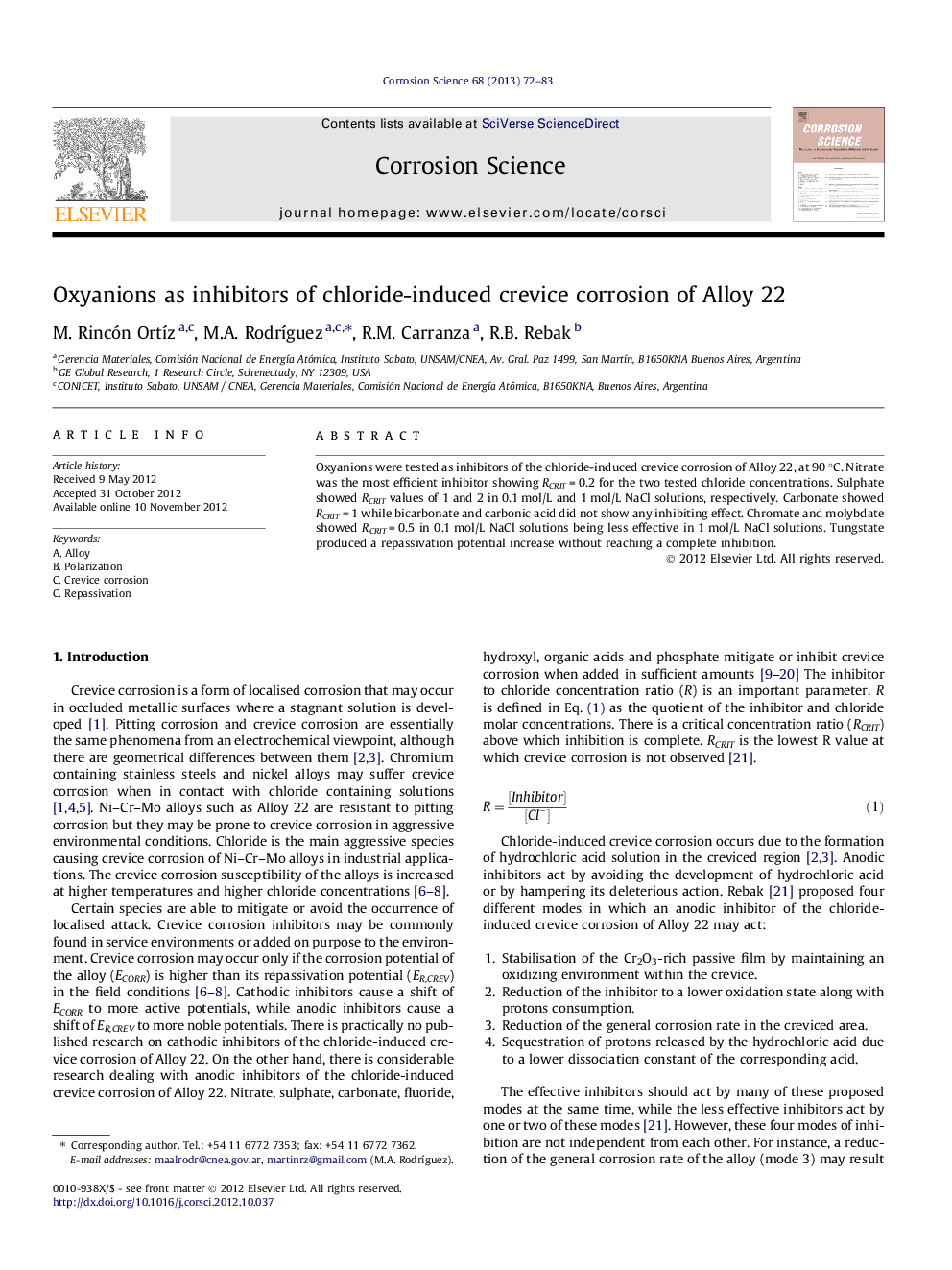| Article ID | Journal | Published Year | Pages | File Type |
|---|---|---|---|---|
| 1469290 | Corrosion Science | 2013 | 12 Pages |
Oxyanions were tested as inhibitors of the chloride-induced crevice corrosion of Alloy 22, at 90 °C. Nitrate was the most efficient inhibitor showing RCRIT = 0.2 for the two tested chloride concentrations. Sulphate showed RCRIT values of 1 and 2 in 0.1 mol/L and 1 mol/L NaCl solutions, respectively. Carbonate showed RCRIT = 1 while bicarbonate and carbonic acid did not show any inhibiting effect. Chromate and molybdate showed RCRIT = 0.5 in 0.1 mol/L NaCl solutions being less effective in 1 mol/L NaCl solutions. Tungstate produced a repassivation potential increase without reaching a complete inhibition.
Graphical abstractFigure optionsDownload full-size imageDownload as PowerPoint slideHighlights► Nitrate was the most efficient among tested inhibitors showing RCRIT = 0.2. ► Sulphate showed RCRIT of 1 and 2 in 0.1 M and 1 M NaCl solutions, respectively. ► Carbonate showed RCRIT = 1 regardless the chloride concentration. ► Chromate and molybdate showed RCRIT = 0.5 in 0.1 M NaCl solutions. ► Chromate and molybdate were less effective in 1 M NaCl solutions.
